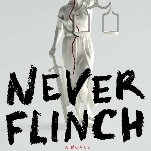Past the initial impulse to jeer, however, This Must Be The Place might win some viewers over—especially those who value the journey more than the destination. This is the English-language debut of Italian filmmaker Paolo Sorrentino (Il Divo, The Family Friend), and like many American movies directed by foreigners, it regards the country’s diverse landscapes and inhabitants with a fresh set of eyes. Early scenes set in Dublin, where Penn lives with his wife (Frances McDormand), suffer from a surfeit of seemingly random quirk, but those mannerisms are somehow transformed once he arrives in the U.S. and embarks upon a series of relaxed, alternately funny and touching interactions with folks he meets en route to the big Nazi showdown. Harry Dean Stanton’s brief cameo only strengthens the general Wim Wenders vibe, and his repeated line “We’ll get to that” could serve as the film’s credo.
Eventually, This Must Be The Place does get to that, at which point its use of the Holocaust as a sort of McGuffin crosses the line into tastelessness. For a long stretch in the middle, though, the film reflects and honors the melancholy optimism of the Talking Heads song from which it takes its name (played multiple times, most memorably by David Byrne himself in a stunning concert sequence). It’s a shaggy-dog road movie that treats digression as epiphany, shot in a style that makes it seem as if Sorrentino is reinventing the world every few minutes. Each newly introduced character or situation—in many cases, each individual shot—seems to be the reason the movie was made. And Penn, who refuses to treat his ludicrous character as a caricature, succeeds in slowly ferreting out the complicated, confused man underneath the affectations. Even those who can’t embrace the movie have to respect an actor of his stature taking such an enormous risk. The performance doesn’t necessarily suggest it, but the guy has balls.







































